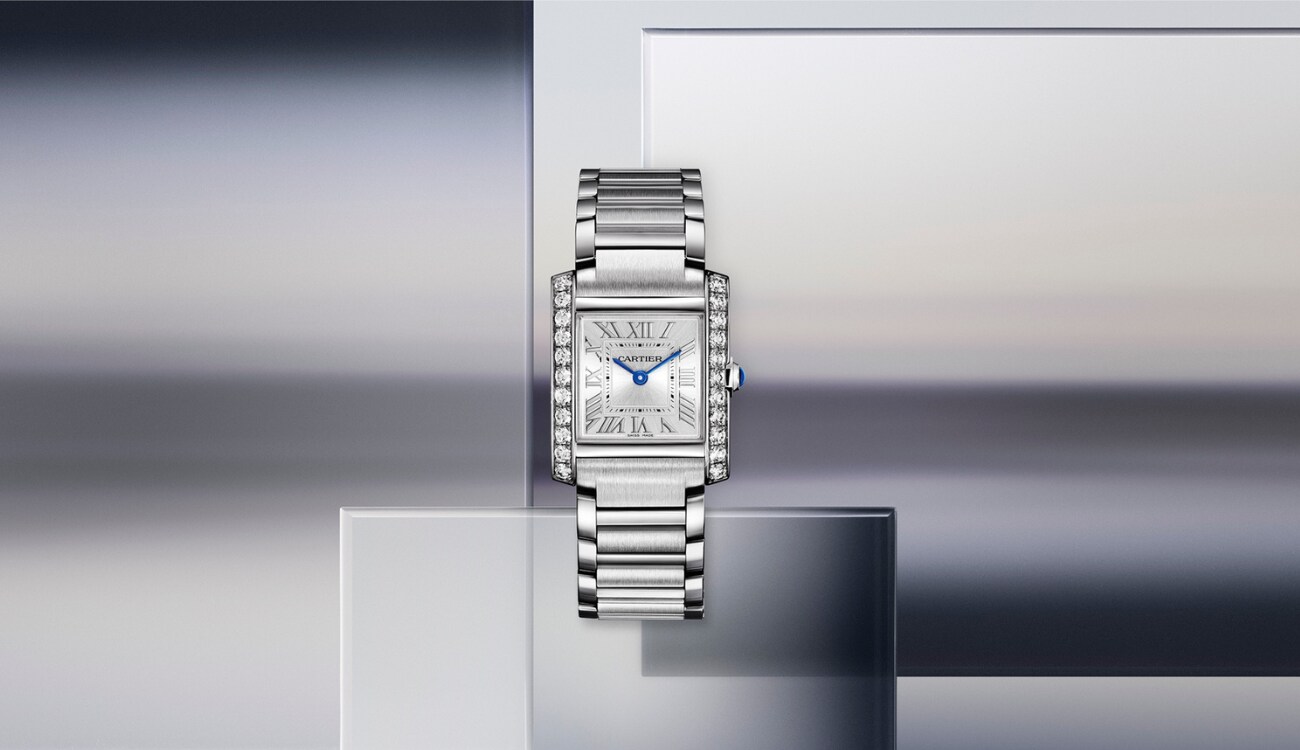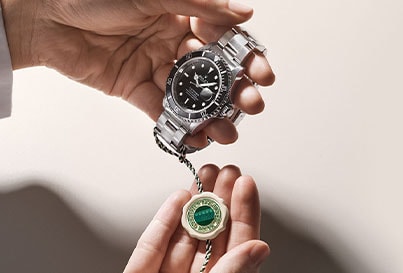-
SALE
Sale JewellerySale WatchesBy Price
-
Diamonds
By Category
-
Engagement
By Category
-
Weddings
Featured
- Jewellery
By CategoryBy Metal TypeBy GemstoneBy BrandBy Edit- Watches
By CategoryBy CollectionBy Luxury BrandBy Designer Brand- Rolex
FeaturedBy Collection- Rolex Certified Pre-Owned
- Brands
FeaturedBrands A-Z- Gifts
By CategoryBy PriceBy Popular Brand- Pre-Owned
By Brand- Sell Your Watch
Sell your watchWe will expertly assess your watch and offer you
a competitive and accurate valuation for the
watch you wish to sell to us.Free Instant Valuation
Drop off at any Showroom
Unrivalled Knowledge & Expertise- Editorial
- Jewellery
- Shop by Category
- SALE
- Diamonds
- Engagement Rings
- Weddings
-
Jewellery
- Back
- Jewellery Offers
- Shop All Jewellery
- Jewellery Home
- By Category
- By Metal Type
- By Gemstone
-
By Brand
- 886 by The Royal Mint
- Amor
- Bijoux Birks
- BOSS
- Calvin Klein
- Chopard
- Emporio Armani
- Fabergé
- FOPE
- FRED
- Georg Jensen
- Goldsmiths
- Gucci
- Jenny Packham
- Kiki McDonough
- Lauren By Ralph Lauren
- Mappin & Webb
- Marco Bicego
- MARIA TASH
- Messika
- Michael Kors
- Olivia Burton
- Pasquale Bruni
- Pomellato
- Repossi
- Roberto Coin
- Skagen
- Susan Caplan
- SUZANNE KALAN
- SWAROVSKI
- Ted Baker
- THOMAS SABO
- Tommy Hilfiger
- By Edit
-
Watches
- Back
- Watch Offers
- Shop All Watches
- Watches Home
- By Category
- By Collection
-
By Luxury Brand
- Rolex
- Rolex Certified Pre-Owned
- BALL
- Bamford
- Baume & Mercier
- Bell & Ross
- Blancpain
- Breitling
- Bremont
- Cartier
- CHANEL
- Chopard
- DOXA
- Frederique Constant
- Girard-Perregaux
- Glashütte Original
- Grand Seiko
- Gucci
- Hublot
- ID Genève
- IWC Schaffhausen
- Jaeger-LeCoultre
- Junghans
- Keris
- Longines
- MeisterSinger
- Montblanc
- Nivada Grenchen
- NOMOS Glashütte
- NORQAIN
- OMEGA
- Oris
- Panerai
- Piaget
- Rado
- RAYMOND WEIL
- TAG Heuer
- TUDOR
- Ulysse Nardin
- ZENITH
- By Designer Brand
- Rolex
- Rolex Certified Pre-Owned
-
Brands
- Back
- View All Brands
-
A-Z
- Rolex Watches
- Rolex Certified Pre-Owned
- 886 by The Royal Mint
- Accurist
- Amor
- Arnold & Son
- BALL
- Bamford
- Baume & Mercier
- Bell & Ross
- Blancpain
- Bijoux Birks
- BOSS
- Breitling
- Bremont
- BVLGARI
- Casio
- Calvin Klein
- Cartier
- Certina
- CHANEL
- Chopard
- Citizen
- Czapek
- DOXA
- Emporio Armani
- Encelade 1789
- Fabergé
- FOPE
- FRED
- Frederique Constant
- Garmin
- Georg Jensen
- Gerald Charles
- Girard-Perregaux
- Glashütte Original
- Goldsmiths
- Grand Seiko
- G-SHOCK
- Gucci
- Hamilton
- Hublot
- ID Genève
- IKEPOD
- IWC Schaffhausen
- Jacob & Co
- Jaeger-LeCoultre
- Jenny Packham
- Keris
- Kiki McDonough
- G-SHOCK
- Lauren By Ralph Lauren
- Longines
- Louis Erard
- Mappin & Webb
- Marco Bicego
- MARIA TASH
- Maurice Lacroix
- Michael Kors
- Messika
- Montblanc
- Nivada Grenchen
- NOMOS Glashütte
- NORQAIN
- Olivia Burton
- OMEGA
- Oris
- Panerai
- Parmigiani Fleurier
- Pasquale Bruni
- Piaget
- Pomellato
- QLOCKTWO
- Rado
- RAYMOND WEIL
- Repossi
- Roberto Coin
- Rolex
- Rolex Certified Pre-Owned
- Seiko
- Skagen
- Susan Caplan
- SUZANNE KALAN
- SWAROVSKI
- TAG Heuer
- Ted Baker
- THOMAS SABO
- Tissot
- Tommy Hilfiger
- TUDOR
- Ulysse Nardin
- Vivienne Westwood
- William Wood Watches
- WOLF
- ZENITH
- Gifts
-
Pre-Owned
- Back
- Shop Pre-Owned Watch Sale
- Shop All Pre-Owned
- Pre-Owned Home
- By Category
-
By Brand
- Rolex Certified Pre-Owned
- Pre-Owned Patek Philippe
- Pre-Owned TAG Heuer
- Pre-Owned Cartier
- Pre-Owned Jaeger-LeCoultre
- Pre-Owned Breitling
- Pre-Owned OMEGA
- Pre-Owned Longines
- Pre-Owned Tudor
- Pre-Owned IWC
- Pre-Owned Panerai
- Pre-Owned Blancpain
- Pre-Owned Breguet
- Pre-Owned Chopard
- Pre-Owned Rado
- Pre-Owned Vacheron Constantin
- Pre-Owned Zenith
- Sell Your Watch
- Editorial
- My Account
- Wishlist
- Store Finder
- Book an Appointment
- Help & Support
The Calibre Complete Guide To Cartier
By Sarah Jayne Potter | 7 minute read

Cartier has been a byword for luxury for over 170 years, and is considered to be one of the most prestigious jewellery and watch manufacturers in the world.
Known for designing and popularising the first wristwatch, the world of horology might have looked very different today if not for Cartier’s influence. The original Santos wristwatch was born at the turn of the 20th century, created at the request of Louis Cartier’s pilot friend, so that he could tell the time whilst flying. And from here, for both Cartier and the wristwatch, the rest is history.
Louis-François Cartier founded the brand in Paris in 1847, and quickly built up a reputation for having an eye for design. This along with the exceptional quality of his pieces made him a firm favourite with the European aristocracy. However, it was his grandsons Louis, Pierre, and Jacques who established the house as the global brand we know today.
The Parisian house has crafted fine watches and jewellery for a number of highly notable people, and has a long history of royal admirers. King Edward VII famously referred to Cartier as “the jeweller of kings and the king of jewellers”, and it seems a wealth of other royals agree too. Over the years, Cartier has been favoured by the likes of King Alfonso XIII of Spain, Tsar Nicholas II of Russia, Queen Elizabeth II, Princess Grace of Monaco and Catherine, Duchess of Cambridge, among many others.
Today, Cartier continues to create pieces with the same refined elegance it was first known for. The timeless beauty of its designs and exquisite craftsmanship means pieces will remain admired for their beauty for hundreds of more years to come.
In this guide to Cartier, we will delve into the rich history of the famed French house, and take a closer look at some of its most iconic pieces.
The story of Cartier
The house of Cartier began in 1847, when Louis-François Cartier took over the workshop of his master, Adolphe Picard. Louis-François was an astute businessman, and he worked hard to turn his master’s humble French watchmaking shop into a desirable brand. Alongside watches, he began to stock beautiful jewellery, fashion accessories and novelty items to broaden his customer base. Initially these items were brought in from other manufacturers, but soon Cartier was outsourcing his own designs.
With a keen eye for aesthetics, Louis-François spent his time defining the signature Cartier style, which helped to set his creations apart from the many other French watchmaking and jewellery houses of the day.
In 1874, his son, Alfred Cartier, took over the business. Under his guidance, the brand underwent its first major expansion. During this time Alfred’s sons Louis, Pierre, and Jacques Cartier also became involved in the family business, and it was they who made the strategic decision to separate the business. Pierre set off to London to establish the first overseas store in 1902. This shop would later be passed on to the youngest brother, Jacques, as Pierre moved on to New York in 1909 to set up a store on Fifth Avenue.
Louis remained in Paris, moving the house to its final location on the Rue de la Paix in 1899. Inheriting his Grandfather’s meticulous attention to design and trends, Louis became the creative heart of the house and went on to create some of Cartier’s most recognisable designs. He was responsible for inventing the Santos in 1904, the world’s first wristwatch, which cemented Cartier’s legacy.
The business remained under family control until 1964, with the death of Pierre Cartier. The Cartier affiliates in London, New York and Paris were now owned by the children of Jacques, Louis, and Pierre, and after Pierre’s death they chose to sell the businesses.
In 1972, Cartier Paris was bought by investor Robert Hocq, who went on to acquire both Cartier London and Cartier New York. The three interests were combined in 1979, under Cartier Monde, reuniting the brands under one roof once again.
Today, Cartier continues to be based in Paris, although it is now a wholly owned subsidiary of the Richemont Group. Other brands under the group include IWC Schaffhausen, Jaeger-LeCoultre and Officine Panerai.

Santos
The creation of the Cartier Santos timepiece in 1904 is famous for heralding both the birth of the modern wristwatch, and the start of Cartier’s long history of crafting luxury watches.
The original watch was created for Louis Cartier’s long-time friend Alberto Santos Dumont, a pioneering Brazilian aviator and inventor. Dumont had asked Cartier to design a timepiece that would allow him to easily tell the time whilst flying. The pocket watches of the time were cumbersome, impractical, and required at least one free hand, making them unsuitable for safe use in the air. The solution was a wearable option, and so the Cartier Santos wristwatch was born.
In 1911 the Santos de Cartier was released, giving the public the opportunity to purchase their own watch. The new timepiece quickly became popular amongst the upper classes.
With such a storied history, and an instantly recognisable design, the Santos is still widely collected today. Characterized by its square, stainless steel case and bezel adorned with exposed screws, it is an iconic look that is both classic and modern all at once.

Tank
Inspired by the military tanks of the First World War, the Tank is one of Cartier’s most famous and sought after styles and is highly desired by collectors.
The cult dress watch was created in 1917 and released to the public a few years later. The original prototype was a gift for General Pershing of the US army, as thanks for the liberation of France during WWI. Its rectangular shape, clean lines, and bold face draw their influences from the Renault army tanks and the Art Deco stylings of the era. With its ties to Allied victory and vintage aesthetic, it is no surprise that many owners feel both a physical and emotional connection to their Tank watches.
The Cartier Tank is a true design classic and has been spotted on the wrist of many famous faces, from Princess Diana, to Andy Warhol, Clark Gable, and Jacqueline Kennedy Onassis.
Panthère de Cartier
One of Cartier’s most distinctive designs, the Panthère de Cartier is both a watch and a jewel, recalling the origins of the first wearable timepieces – which were intended as decorative status symbols for wealthy women.
Introduced in 1983, the model combines Cartier’s distinctive square face and sapphire crown with an elegant 5-link bracelet for added femininity. Many styles are also adorned with gold, diamonds, and precious gemstones, making for a striking statement piece. After being discontinued in the early 00s, and recently reintroduced, the style is in high demand amongst collectors on the second-hand market.
The collection was created to pay tribute to one of Cartier’s most influential directors, Jeanne Toussaint, who designed the famous Panther ring, and gave Cartier its most iconic motif. Today, the line is still more contemporary than ever, and will forever be synonymous with the luxury and glamour of the 80s.
Ballon Bleu
Although the Ballon Bleu is a relatively new addition to the Cartier line, it has already become one of the company’s best selling watches. Its popularity may be due, in part, to its numerous celebrity admirers. It is the favoured timepiece of one of the world’s most famous women, Catherine, Duchess of Cambridge, who can regularly be seen wearing her Ballon Bleu.
The style has a highly distinctive case, which elegantly curves over the famous sapphire crown, encircling it in metal. The gentle curve of the crystal and softly rounded edges further complement the classic design, giving it a modern spin. It’s a popular design for both men and women and comes in a variety of sizes and styles.
Pasha
The Pasha de Cartier has been a cult watch since its creation in 1985. Its power caught the eye of the generations' opinion leaders. Initially adopted by men; then immediately appropriated by women for the power it exudes. A standout watch that loves light, assumes its excesses and asserts its strength of character. Faithful to the original model but even more sophisticated with its crown featuring a blue spinel or sapphire, interchangeable strap and its multiple possibilities of personalisation, the Pasha de Cartier watch for the 2020s is classic yet contemporary and remains as edgy as ever.
Sign Up For Calibre Newsletter
Get a round up of the latest stories from Calibre every month, directly to your inbox.
© 2025 Goldsmiths
Goldsmiths is a trading name of Watches of Switzerland Company Limited. Registered Office: Aurum House, 2 Elland Road, Braunstone, Leicester, LE3 1TT, Registered in England and Wales, Company number 00146087. Registered VAT Number 834 8634 04. Watches of Switzerland Company Limited acts as a broker and not a lender and offers finance from Secure Trust Bank PLC trading as V12 Retail Finance and PayPal UK Ltd, 5 Fleet Place, London, United Kingdom, EC4M 7RD trading as PayPal Credit. Watches of Switzerland Company Limited is authorised and regulated by the Finance Conduct Authority. Our registration number is 308710. *Credit is provided subject to affordability, age and status. Minimum spend applies. Terms and Conditions apply. UK residents only. Not all products are regulated by the Financial Conduct Authority and FOS protection will not be extended to unregulated agreements. Please note the Consumer Credit Act states that should your purchase / loan amount cost more than £30,000 you will not be covered under Section 75 of the Consumer Credit Act.
*Next day delivery available on most items. See product pages for more information.








